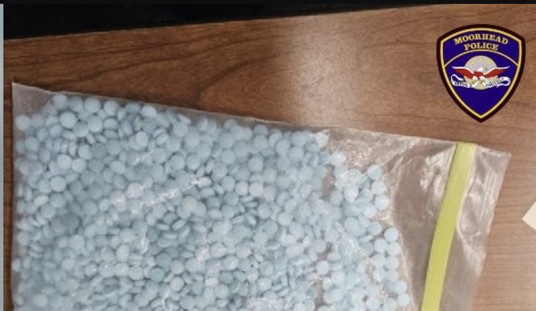On August 29, 2005, monster Hurricane Katrina slammed into Louisiana and Mississippi. In the catastrophe that resulted, over 80% of New Orleans was flooded and 1,836 people in Louisiana and Mississippi died. The storm caused over $150 billion in damages and forced thousands of New Orleans and Gulf Coast residents to relocate, some permanently. Prior to Hurricane Katrina, the population of New Orleans was 484,000, while today only 391,000 people live in the city. It forever scarred a 300-year old city that has faced a number of challenges, but none greater than Hurricane Katrina.
Before the disastrous storm hit the city, President George W. Bush was at his ranch in Crawford, Texas enjoying a four week vacation. On the day Hurricane Katrina smashed into the Mississippi coast, Bush took a brief break from his vacation to visit Phoenix, AZ to promote his Medicare prescription drug legislation. He also presented a cake and posed for pictures with U.S. Senator John McCain (R-AZ), who was celebrating his 69th birthday.
Incredibly, after the McCain visit, Bush went back to his ranch to continue his vacation for another two days. He did not return to Washington D.C. until August 31, a full two days after Hurricane Katrina devastated the Gulf Coast. In an infamous photo that captured his disengaged response to the storm, Bush was pictured looking at the hurricane destruction from his Air Force One window as he flew over the region before returning to the White House. Bush later realized that the photo was a “huge mistake” because it conveyed the impression he was “detached and uncaring.”
While Bush seemed disinterested, the response of FEMA was initially very slow and inadequate. Even though people were still dying and the world saw televised images of chaos at the Convention Center and flood victims being rescued from rooftops, no significant aid reached New Orleans until Friday September 2, four days after the hurricane hit.
At the time, FEMA was led by Michael Brown, a political appointee without any emergency management experience. Brown did a woeful job of preparing FEMA to tackle this unprecedented challenge. Unfortunately, at press event in Mobile, Alabama, as aid had still not arrived in most of New Orleans, Bush astonishingly praised the inept FEMA Director by claiming “Brownie, you’re doing a heck of a job.”
Recommended
Of course, “Brownie” was a complete failure and was forced to resign on September 12, 2005, the day after President Bush made his first visit to New Orleans for an on-site inspection of the catastrophic damage.
After an initially weak federal government response, President Bush did make numerous visits to New Orleans and clearly displayed a true interest in the recovery of the city. However, a negative image was already cemented in the minds of Americans and President Bush never recovered politically. After Hurricane Katrina, his approval numbers collapsed and continued to be poor for the remainder of his presidency.
Almost 12 years later, another monster storm, Hurricane Harvey, hit the United States. This time, the federal government was ready. FEMA, which is now led by Brock Long, a component professional with 16 years of relevant experience, deployed over 9,000 emergency personnel to Texas. In the last week, local and state officials have been working closely with the Trump administration in all aspects of the response.
Instead of waiting almost two weeks to inspect the damage, President Donald Trump made his first visit to Texas while the hurricane was still in the state. His visit was well received by storm victims and he was given a hero’s welcome. While petty critics blasted the footwear of Melania Trump, the people of Texas were happy to see both the President and the First Lady.
In another display of the administration’s commitment to bolster recovery efforts, Vice President Mike Pence, along with several Trump cabinet officials, visited Texas on Thursday. On Saturday, President Trump will return to Texas, visiting visit the hardest hit area, Houston, as well as Lake Charles, Louisiana, which was also inundated with rain.
The administration is preparing an initial aid package of almost $6 billion for Harvey recovery. Understandably, full recovery will be incredibly expensive and take years of concerted determination, but, at least the storm victims know that their president is concerned and involved as they endeavor to rebuild.
Sadly, former President George W. Bush did not adequately convey that message to Hurricane Katrina victims. It is clear that President Trump followed the advice of U.S. Senator Charles Grassley (R-IA) who warned him not to make the “same mistake” President Bush did after Hurricane Katrina.
President Trump is not only cheer-leading for the people of Texas; he is also personally contributing to their recovery by donating $1 million to relief efforts. In fact, to provide an even greater assist to the region, the President declared Sunday a National Day of Prayer for the victims of the hurricane.
In many different ways, President Trump is demonstrating a sincere interest in the well-being of Hurricane Harvey victims. For people who have been ravaged by such a catastrophe, this encouragement, coupled with a tangible action plan for recovery, is welcome news indeed.


